High School Geometry Unlocked (2016)
Chapter 7. Circles
Lesson 7.2. Arcs and Sectors
ARCS
An arc is a portion of the circumference of a circle. Arc and circumference are both measured in units of length—in other words, they measure the distance along the edge of a curve.
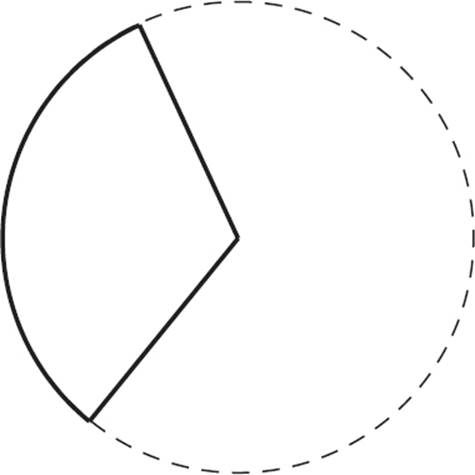
The term arc can also refer to the angle formed by the endpoints of the arc and the center of the circle. Whenever an arc is defined in a circle, there are actually two arcs—the major arc and minor arc. A major arc has an angle greater than 180°, while a minor arc has an angle less than 180°. In the figure below, the major arc has an angle of 265°, and the minor arc has an angle of 95°.
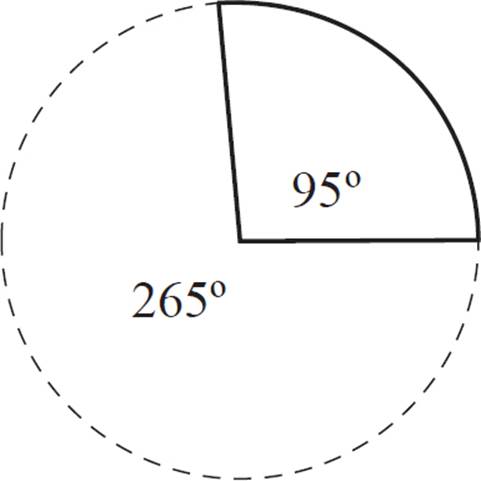

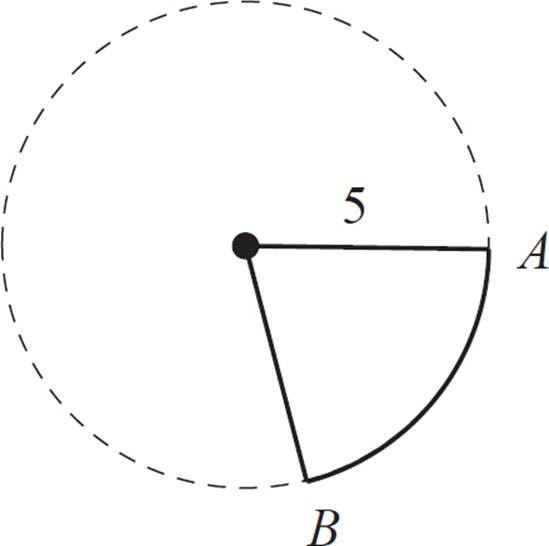
In the figure above, minor arc AB measures ![]() the circumference of the circle. What is the measure of arc AB?
the circumference of the circle. What is the measure of arc AB?
The radius of the circle is given as 5, so the circumference is 10π (circumference = 2πr).
It’s also stated that the arc measures ![]() of the circumference of the circle. Therefore, the arc must be equal to 10π ×
of the circumference of the circle. Therefore, the arc must be equal to 10π × ![]() , or 2π.
, or 2π.

A semicircle is exactly half of a circle, and its arc measures 180°. A semicircle arc is not considered “major” or “minor.”
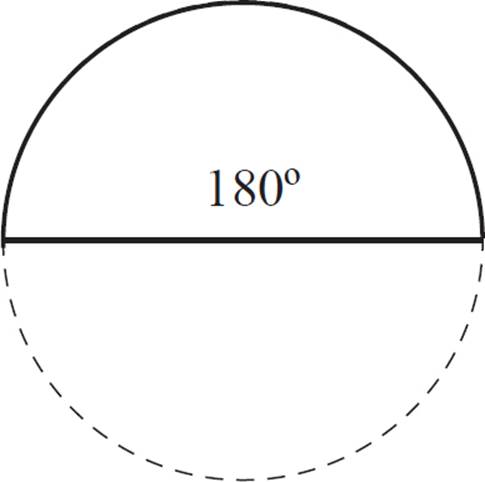

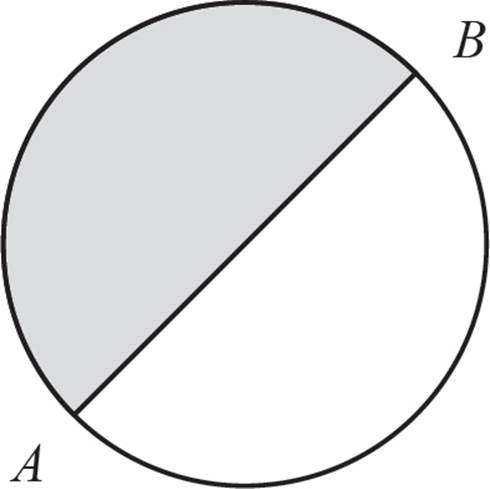
In the figure above, semicircle AB has an area of 18π. What is the radius of the circle?
Note that the area given was for the semicircle, not the full circle. Don’t let that confuse you, and don’t worry about deriving a formula to solve for the radius of a semicircle. Right away, you should multiply that area by 2 to get the full area of the circle, which is 36π. Then, you can use the area of a circle to solve for the radius.
|
A = πr2 |
|
|
36π = πr2 |
|
|
36 = r2 |
Divide both sides of the equation by π. |
|
6 = r |
Take the square root of both sides of the equation. |
The radius of the circle is 6.


Here is how you may see semicircles on the ACT.
An equilateral triangle and 2 semicircles have dimensions as shown in the figure below. What is the perimeter, in inches, of the figure?
A.3 + 3π
B.6 + 6π
C.6 + 12π
D.8 + 6π
E.18 + 12π
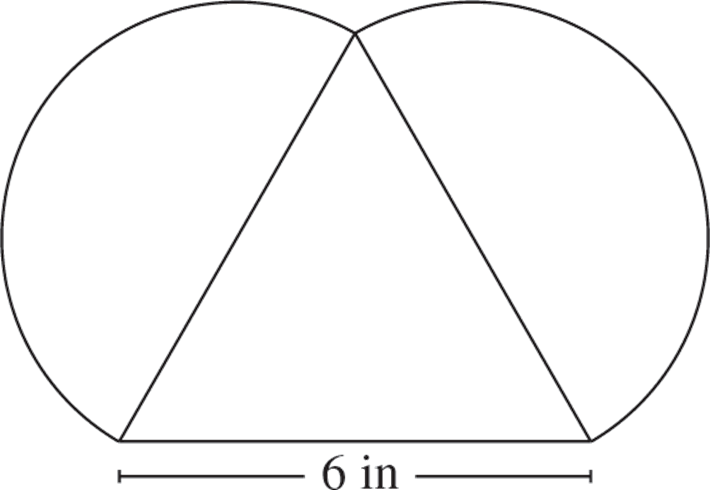
An intercepted arc is an arc that is defined by two lines or segments intersecting its endpoints. It’s no different from any other arc, but you should be aware that an intercepted arc is considered to be the arc between two line segments. In the figure below, the intercepted arcs are shown in bold. Sometimes, there are two in the same circle.
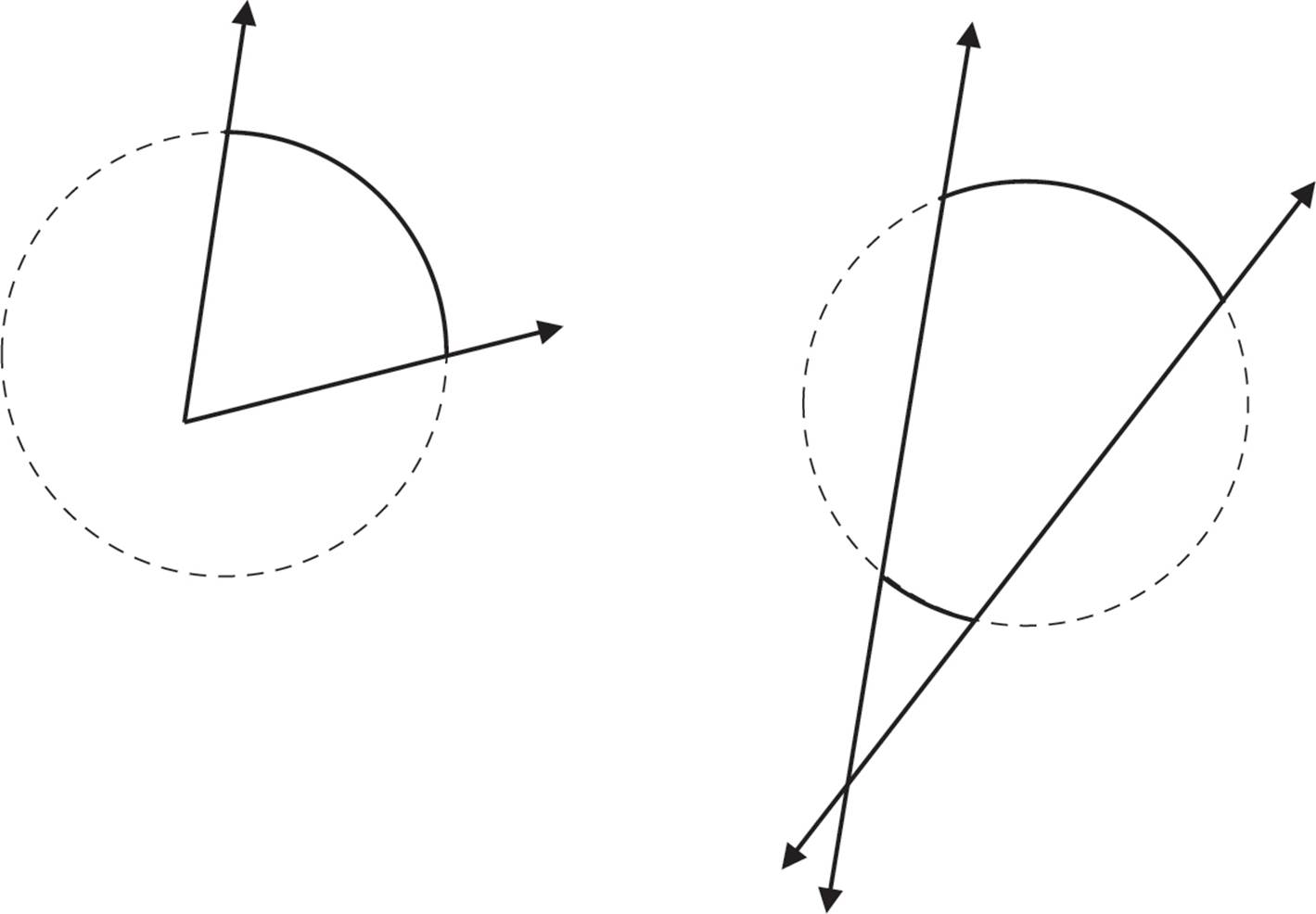
SECTORS
A sector is a portion of the area of a circle, bound by two radii and their intercepted arc. In other words, it’s a “wedge” or “slice” of the circle. Sectors are measured in terms of area.
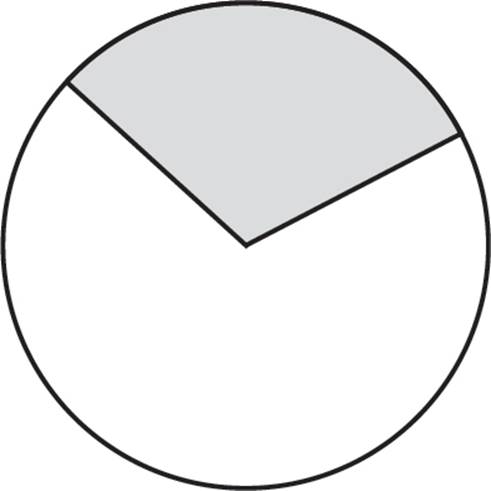

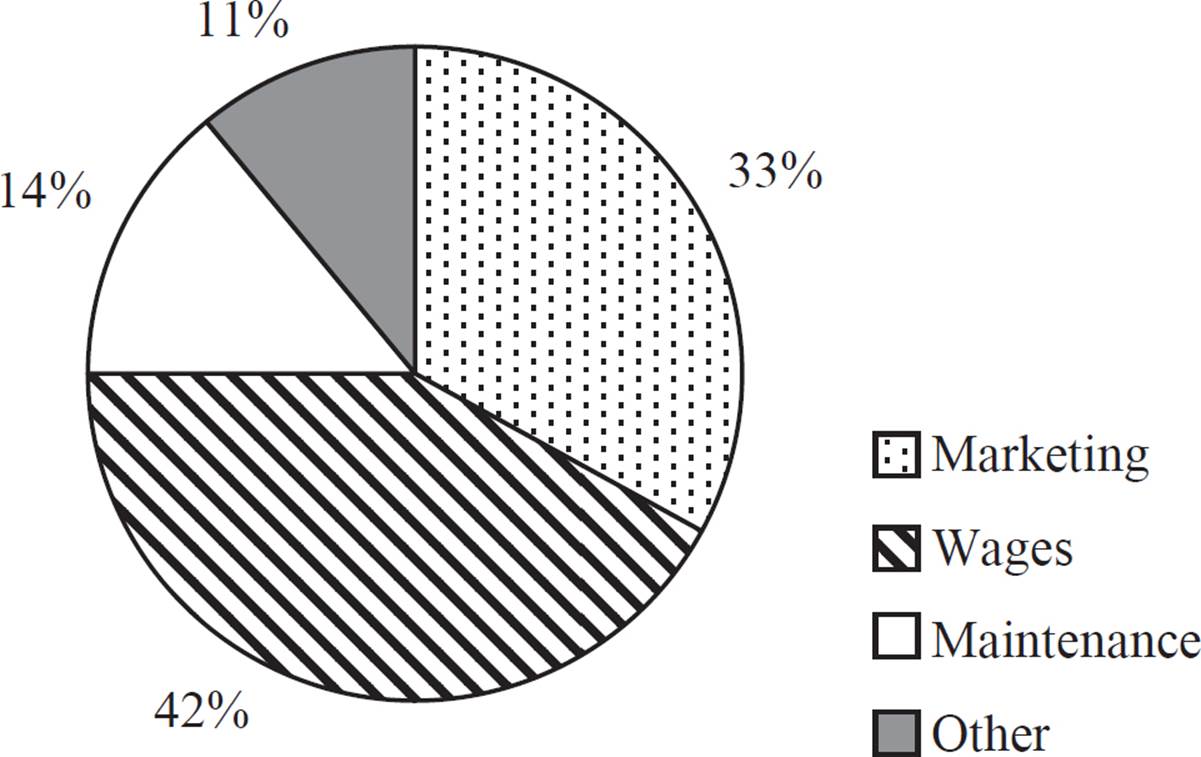
The pie chart above is printed on a poster for the annual executive meeting at Krazy Town. If the area of the entire circular pie chart is 144π square inches, what is the area of the sector labeled “Maintenance”?
The given information states that the area of the circle is 144π, and the sector labeled “Maintenance” is 14% of the circle. To find the area of the sector, multiply the total area by the percentage given for the sector.
|
144π × .14 |
.14 is the decimal equivalent of 14%. |
|
= 20.16 × π |
|
|
≈ 63.33 |
The area of the sector is approximately 63.33 square inches.


The perimeter of the figure consists of one side of the equilateral triangle and the arc length of two semicircles. You can immediately eliminate (A), (D), and (E) because the length of one side of the equilateral triangle is 6 inches. Both semicircles have a diameter of 6 and given C = dπ = 6π, each semicircle has an arc length of 3π. With the exposed side of the triangle, the perimeter of the figure should be P = 6 + 3π + 3π = 6 + 6π. If you selected (C), you may have found the circumferences of two full circles rather than two semicircles. The correct answer is (B).
INSCRIBED AND CENTRAL ANGLES
An angle whose vertex is at the center of the circle is called a central angle. An angle whose vertex is on the circumference of the circle is called an inscribed angle.
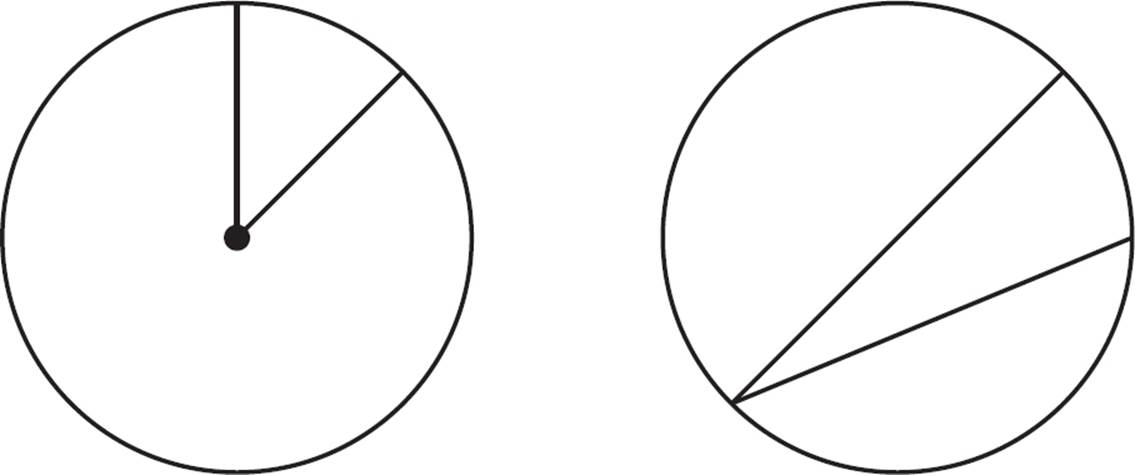
The measure of an inscribed angle is always ![]() the measure of the corresponding central angle. In this context, “corresponding” means that both pairs of legs intersect the same two points on the circle.
the measure of the corresponding central angle. In this context, “corresponding” means that both pairs of legs intersect the same two points on the circle.
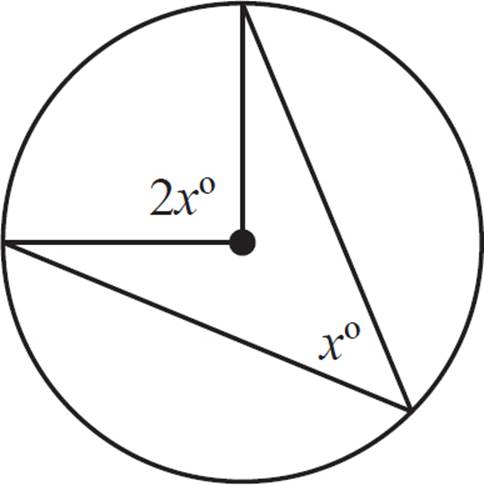

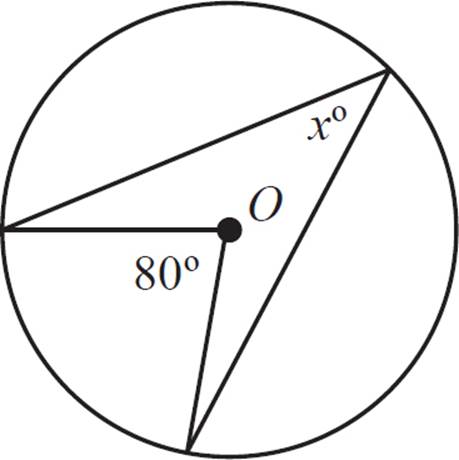
In the figure above, O is the center of the circle. What is the measure of x?
From the rule above, we know that the inscribed angle is always ![]() the measure of the corresponding central angle. Therefore, the inscribed angle is 40° (= 80° ×
the measure of the corresponding central angle. Therefore, the inscribed angle is 40° (= 80° × ![]() ).
).


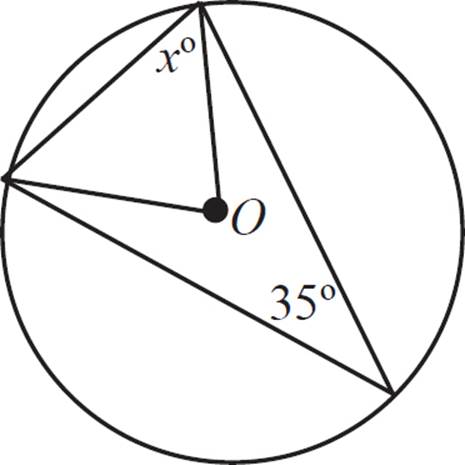
In the figure above, O is the center of the circle. What is the measure of x?
From the rule above, we know that the inscribed angle is always ![]() the measure of the corresponding central angle. Therefore, the central angle must be 70°.
the measure of the corresponding central angle. Therefore, the central angle must be 70°.
To solve for x, it’s necessary to recognize that two sides of the triangle are radii of the circle. This means that they must be congruent sides, since all radii in a circle are congruent. Therefore, this is an isosceles triangle, and the two base angles are congruent.
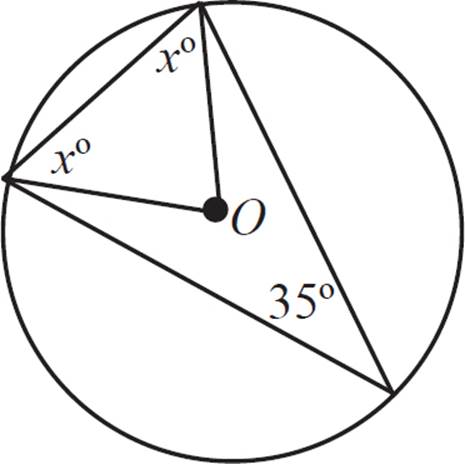
Since these two unknown angles are congruent, we can make an equation to solve:
|
180° = 70° + 2x° |
|
|
110° = 2x° |
Subtract 70° from both sides of the equation. |
|
55° = x |
Divide both sides of the equation by 2. |
The measure of x is 55°.

CONCENTRIC CIRCLES
Concentric circles are circles that share the same central point.
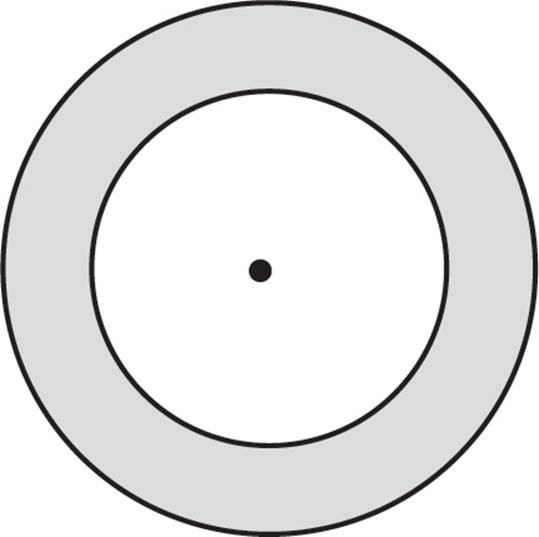
The distance between two concentric circles is the same all the way around. The “ring” or “donut” shape formed by two concentric circles is called an annulus.

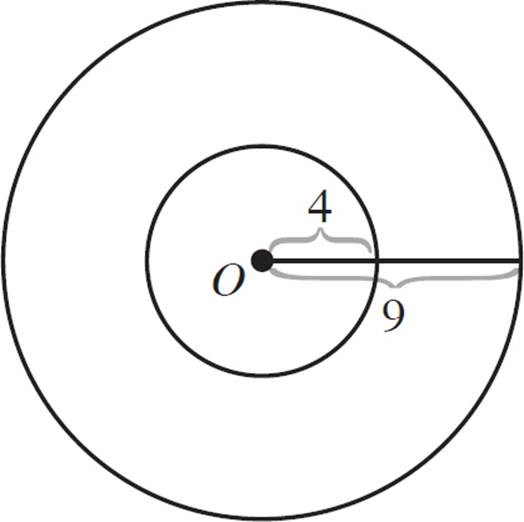
In the figure above, the two circles are concentric about point O. What is the area of the annulus?
To find the area of an annulus, first find the areas of the two circles.
Smaller circle:
A = πr2
= π(4)2
= 16π
Larger circle:
A = πr2
= π(9)2
= 81π
The area of the annulus is the difference between the areas of the two circles.
= 81π − 16π
= 65π
The area of the annulus is 65π.